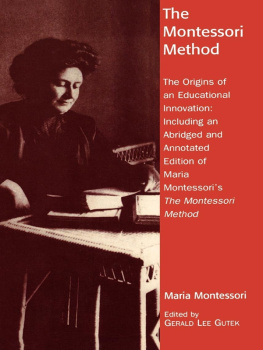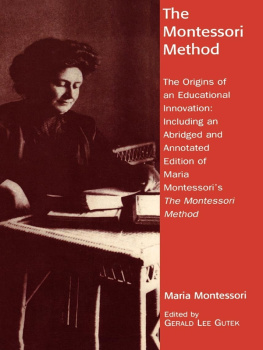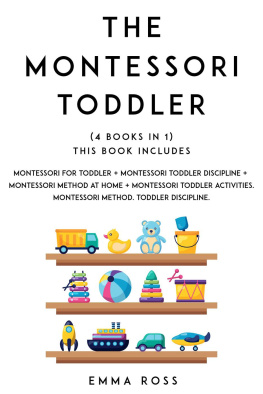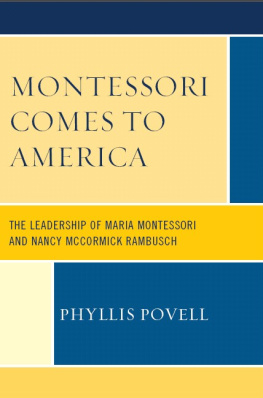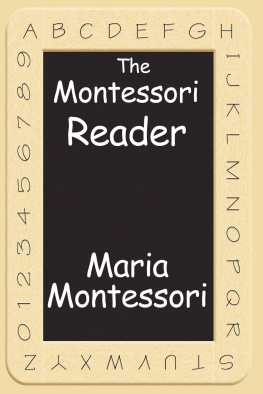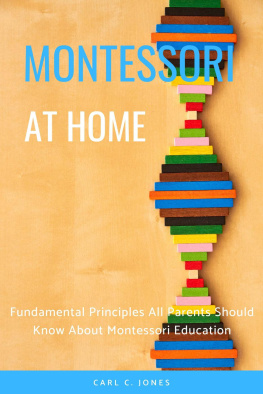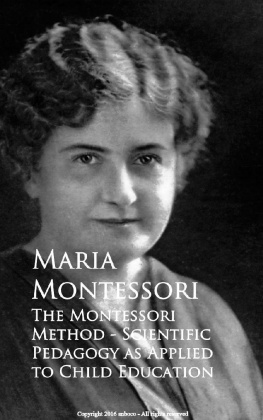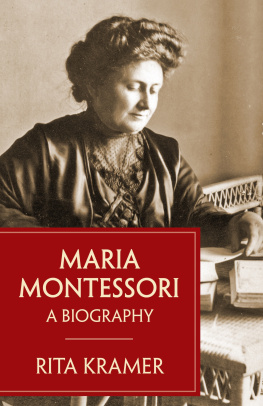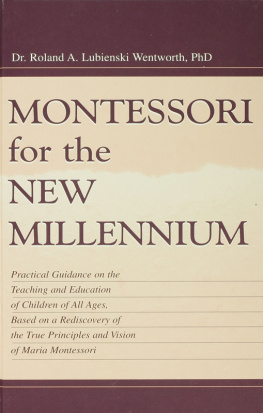Gerald Lee Gutek - The Montessori Method
Here you can read online Gerald Lee Gutek - The Montessori Method full text of the book (entire story) in english for free. Download pdf and epub, get meaning, cover and reviews about this ebook. year: 2013, publisher: Rowman & Littlefield Publishers, genre: Religion. Description of the work, (preface) as well as reviews are available. Best literature library LitArk.com created for fans of good reading and offers a wide selection of genres:
Romance novel
Science fiction
Adventure
Detective
Science
History
Home and family
Prose
Art
Politics
Computer
Non-fiction
Religion
Business
Children
Humor
Choose a favorite category and find really read worthwhile books. Enjoy immersion in the world of imagination, feel the emotions of the characters or learn something new for yourself, make an fascinating discovery.
- Book:The Montessori Method
- Author:
- Publisher:Rowman & Littlefield Publishers
- Genre:
- Year:2013
- Rating:4 / 5
- Favourites:Add to favourites
- Your mark:
The Montessori Method: summary, description and annotation
We offer to read an annotation, description, summary or preface (depends on what the author of the book "The Montessori Method" wrote himself). If you haven't found the necessary information about the book — write in the comments, we will try to find it.
An essential resource for all students and scholars of early childhood education, this book offers a rich array of material about Maria Montessori and the Montessori Method. Distinguished education scholar Gerald Gutek begins with an in-depth biography of Montessori, exploring how a determined young woman overcame the obstacles that blocked her educational and career opportunities in Italy during the late Victorian age. The author then analyzes the sources and influences that shaped the Montessori philosophy of education. After laying the foundation for Montessoris development, Gutek presents an annotated and abridged edition of The Montessori Method (1912), the seminal work that introduced her educational innovations to a U.S. audience. The book concludes with key historical documents, including disciple Anne E. Georges notes on the Montessori lectures and William H. Kilpatricks critique of the Montessori method. Preserving the historical context of Montessoris...
Gerald Lee Gutek: author's other books
Who wrote The Montessori Method? Find out the surname, the name of the author of the book and a list of all author's works by series.

